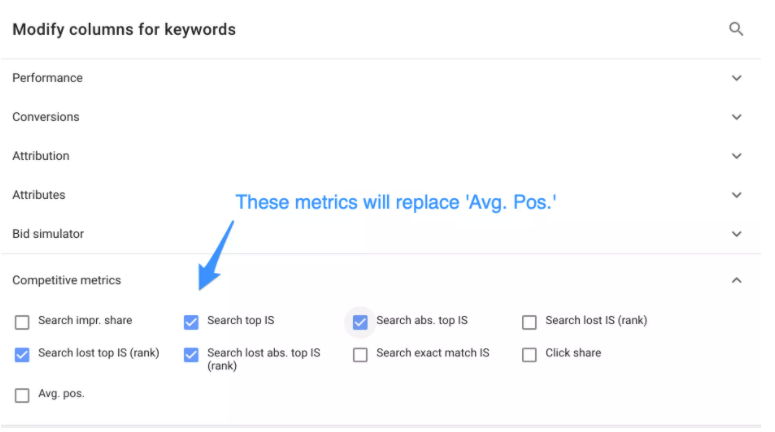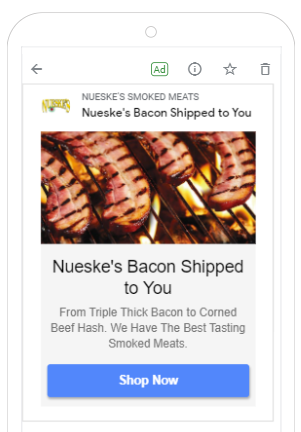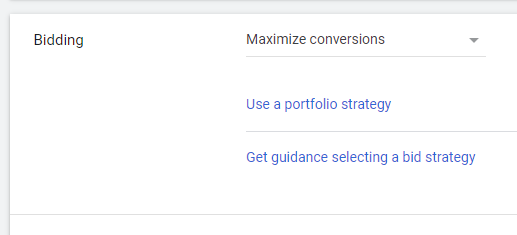03 Nov Your Old Paid Search Strategies Are Becoming Extinct: Try These Instead via @jonkagan
You know those good old paid search strategies – the ones we have always relied on, feel evergreen, and will never “go the way of Old Yeller”?
Well, the reality is, the bid strategies from as recent as 2018 often struggle to still remain valuable, cutting edge, and tip-top shape for today’s marketers.
Those who go back to the “O.G.” approaches to search, may find them sharing in the same levels of success and memory as operations like:
- Yahoo Panama (never Overture, Overture was awesome).
- ePilot.
- 7Search.
- Ask Sponsored Listings (see what happens when you ditch Jeeves?).
- AOL Search Marketplace (remember when that was still a thing?).
- Net-Net.
Relying on your older bid strategies and concepts may actually do more harm to your business than help.
So if you’re relying on some specific older strategies, this post will explain why they’re wrong, and offer some good alternatives to use.
So now, let’s dig in and potentially ruin some of the hard work you did three years ago and failed to update.
5 Bid Strategies & Approaches That Are No Longer Valid
Old Strategy 1: SEO Can Cover Brand, So I Can Stop Bidding on Brand Keywords
Response: No!
Why?
I hear this at least two times a year for the past 16 years.
Unless your name is Amazon or eBay, doing this method is not valid for your operation.
This goes back to the 1+1=3 model (paid search and SEO together on terms drive incrementality than SEO by itself).
Competitors will be there to divert your traffic if you aren’t there.
Being present allows you to customize messaging and the consumer path.
Alternative
- This is borderline insulting, but the alternative is: Bid on your brand keywords.
- Couple it with a bid strategy to scale the value of it.
Old Strategy 2: Bid to Position
Response: Well, the original version is no longer capable since Google has deprecated the average position metric.
Why?
Average position literally went away in Google.
In Bing (I don’t care what they call it over at Microsoft, I am sick of their five name changes in 15 years, it will always be called “Bing” to me), the bid strategy does not exist


Alternative
In Bing, you can try and do the old reverse calculation of competitors and set bids to a specific number manually (not recommended).
Most third-party management platforms (i.e., SA360) have a bid to impression share strategy you can use for Bing, or you could just do max clicks.
On the Google side, I recommend a target impression share bid strategy, with a focus on top of page or absolute top of page.
Side note: I personally do not like this approach, for me.
Unless it comes to competitor bidding and conquesting, I’ve found little value in battling for first or second position, since the end game CPC cut down on our ultimate efficiency (so buyer beware).
Old Strategy 3: Target Impression Share (Google-Specific)
Response: You sacrifice efficiency and potential traffic to just try and be seen.
Why?
The breakdown of this is straightforward, bid to be visible, throw efficiency more or less out the window.
Yes, you can put a CPC cap on it, but anticipate it to push the top of that CPC to get you the impression share (especially in saturated verticals).
Yes, the rule can be used for getting you in theory the top of the page visibility (i.e., the alternative to average position), but it does not do it in a very cost-efficient manner.
Unless you have a bottomless budget and/or you have a justified reason to hit a specific impression share and the trickledown effect of inefficiency can be offset by all other metrics, it is just not worth it.
And don’t use the excuse of “I use it as branding effort for non-brand keywords.”
There are most efficient approaches, still using keywords, to do the branding (i.e., Discovery).
 Discovery Ads Setup…with Nueske’s Bacon
Discovery Ads Setup…with Nueske’s Bacon
Alternative
Run with a max click bid strategy, but:
- Set it with a high CPC so it can get more aggressive with rank, but not limiting.
- Don’t go more than seven days without a CPC cap, otherwise, you’ll lose the efficiency of the rule. (I do recommend starting without one, then moving onto one, post-learning period, to set the baseline).
Old Strategy 4: MAX ROI/ROAS
Response: It isn’t bad if you keep a low ROI/ROAS (i.e., a loss or mildly profitable).
But when you scale the target, things can go downhill.
Why?
Plain and simple, this strategy is focused on maximizing your return.
In theory, this is great, except it is only focused on your return and not your total return.
And unless things are already going gangbusters and scalable ROI is no issue for you (at which point you should probably move to a conversion value strategy then), then you realize that as you scale up ROI/ROAS, you are in turn working to improve efficiency.
What happens when you improve efficiency?
You narrow your audience.
This means, that as you work to make yourself to be more profitable
- Your sheer volume of traffic (and theoretically conversions) runs a risk of declining.
- This is a perfect example of “getting cake but not being able to eat it too.”
Alternative
There are two alternatives to this, both have a pro and con to them
1. Max Conversion Value (Google only)
- Pro: Chases the revenue for you.
- Con: Could diminish sheer number of sales (not ideal if you need to move specific inventory).
2. Max Conversions to Target CPA
- Pro: Works like max clicks, set a max conversion (maybe with a max CPC if you so wish) and optimize to the sales volume, get a baseline CPA (if you don’t have one, then switch to a target CPA and slowly walk back from there).
- Con: Doesn’t account for ROI or value.
I prefer max conversions to target CPA, using a max allowable CPA for all products.
This is a great approach for DR efforts or single pricing on all products.
It works best for getting a CPA baseline, then slowly improving it (every 2-3 weeks) by walking back the target over time.
 Max Conversions Setup
Max Conversions Setup
 Target CPA Setup
Target CPA Setup
Old Strategy 5: SKAG (a.k.a., Single Keyword Ad Groups)
Response: This is the one I get the most grief for, but the concept of SKAG is so 2014.
Courtesy of our good friends at Google and Bing, the nuances that made this strategy necessary, have pretty much gone out the window.
Why?
The concept of SKAG was to isolate the top keyword with ideal ads so that the best ad could be given to the query, which would logically link to the keyword you bid on.
It was most heavily used on exact and phrase match.
- The concept of match type has greatly changed, and the reality is, “exact match” is really not that exact anymore.
- In fact, we are seeing reliance on keyword-less search efforts left and right, making the SKAG model even less valuable.
You could still set up a SKAG design.
But its value is really isolated down to exact match only.
The amount of effort put in to populate the negative keywords around it may very well offset any value you’ll get in return.
Pro-Tip
If an agency or platform tells you they specialize in SKAG management and creation and they don’t heavily tout any other method – because there are a lot of operations that pull this B.S. – then it is likely not an operation you want to work with.


Alternative
Isolation to prevent cannibalization is still a solid approach.
I recommend your basic but useful ad group/campaign segmentations (or a combination of them):
- Brand/Non-Brand.
- Device.
- Geographic (especially for time zone work).
- Demographic/Audience.
Keep the ad groups tight and focus less on the single keyword, but on the group of related keywords.
Coupled with the targeting, you end up with the same approach as SKAG.
You only end up with a fraction of the ad groups versus that of SKAG, making management a lot easier.
Conclusion
Now, not all of you will agree with what I said – and that is your prerogative.
But if you read this far, you’re likely questioning your strategies and getting a bit of account fatigue.
I recommend getting away from the old-school methods and progressing to more productive strategies that are still relevant today.
More Resources:
- What’s the Best PPC Bidding Strategy?
- It Isn’t Business as Always: Adapting PPC Strategy in Changing Times
- PPC Today – Letting Go of What We Were Taught
Image Credits
In-Post Image: Taken by author
All screenshots taken by author, October 2020
Sorry, the comment form is closed at this time.